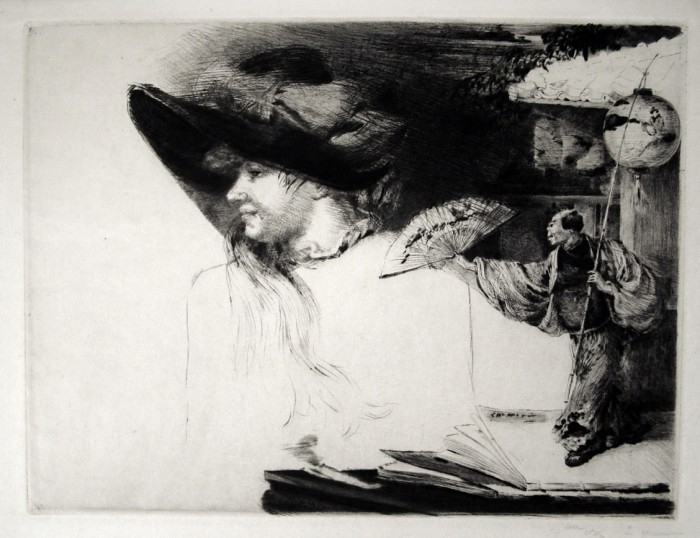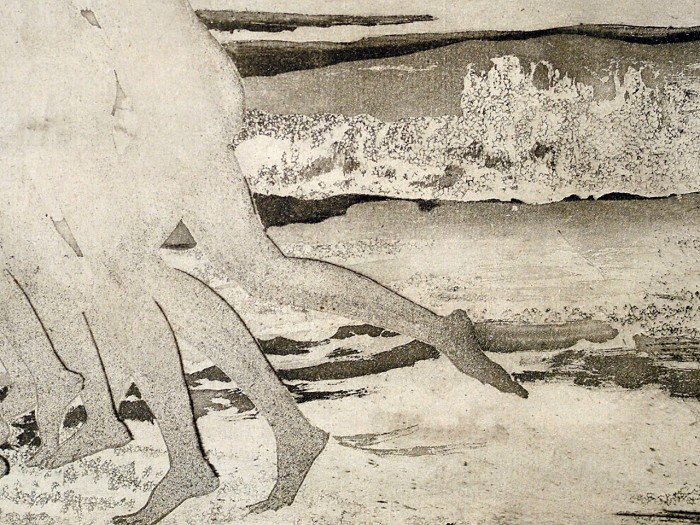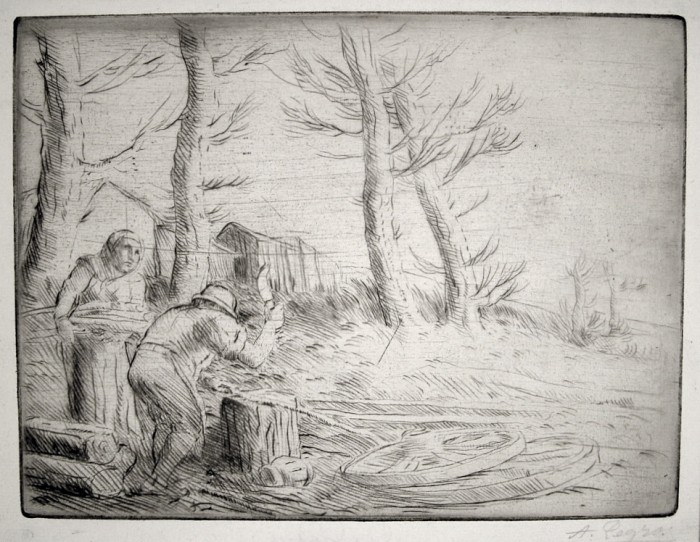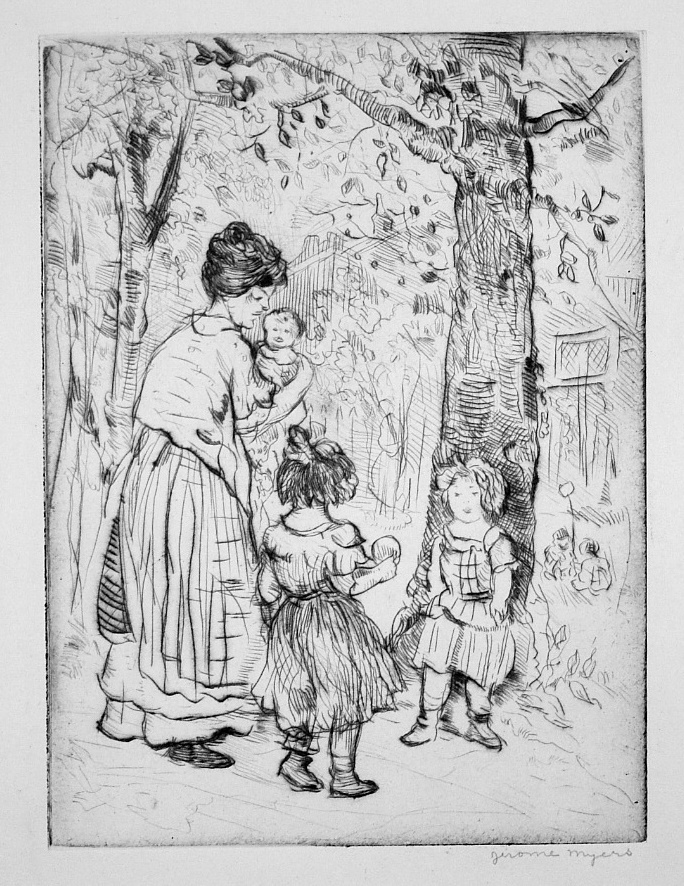Japonisme – 4 States
Wednesday, September 30th, 2009
State 14
Henry Somm (1844-1907), Japonisme, drypoint, c. 1881. Four proofs, in states 2 (with pencil additions), 7, 14, and an intermediate state between 7 and 14 with pencil drawing, states 2, 7 and 14 signed and annotated as to their states. Each impression in good condition, with margins, 9 1/2 x 12 1/2 inches.
State 2: A fine impression on wove, with a figure drawn in to the left of the woman, with extensive penciling below the woman’s face and elsewhere in preparation for later states, signed and annotated “2 epreuves”.
State 7: A fine rich impression on cream wove, still with the figure to the left of the woman, but with two figures added in the lower foreground – a woman in a stylish dress and a devilish figure to her left, signed and annotated “7eme etch” and 2 epr”.
Intermediate working proof: A fine rich impression on cream laid paper, with the man at the right fully drawn as in state 7 above, but with the figure to the left of the woman and the two foreground figures burnished out, with extensive penciling in the unprinted areas.
State 14: A fine rich impression on cream wove, with the man on the right now holding a lantern with a detailed picture on it, standing on folders and in front of a house, signed and annotated 14 etat, 2 epreuves.
Henry Somm, whose original name was Francois-Clement Sommier, was a well-known impressionist illustrator and artist, a friend of Buhot, and of course much influenced by Japonisme.

State 2, with extensive pencil additions

State 7, with new figures in the foreground

Working Proof between states 7 and 14, with extensive penciling.


































